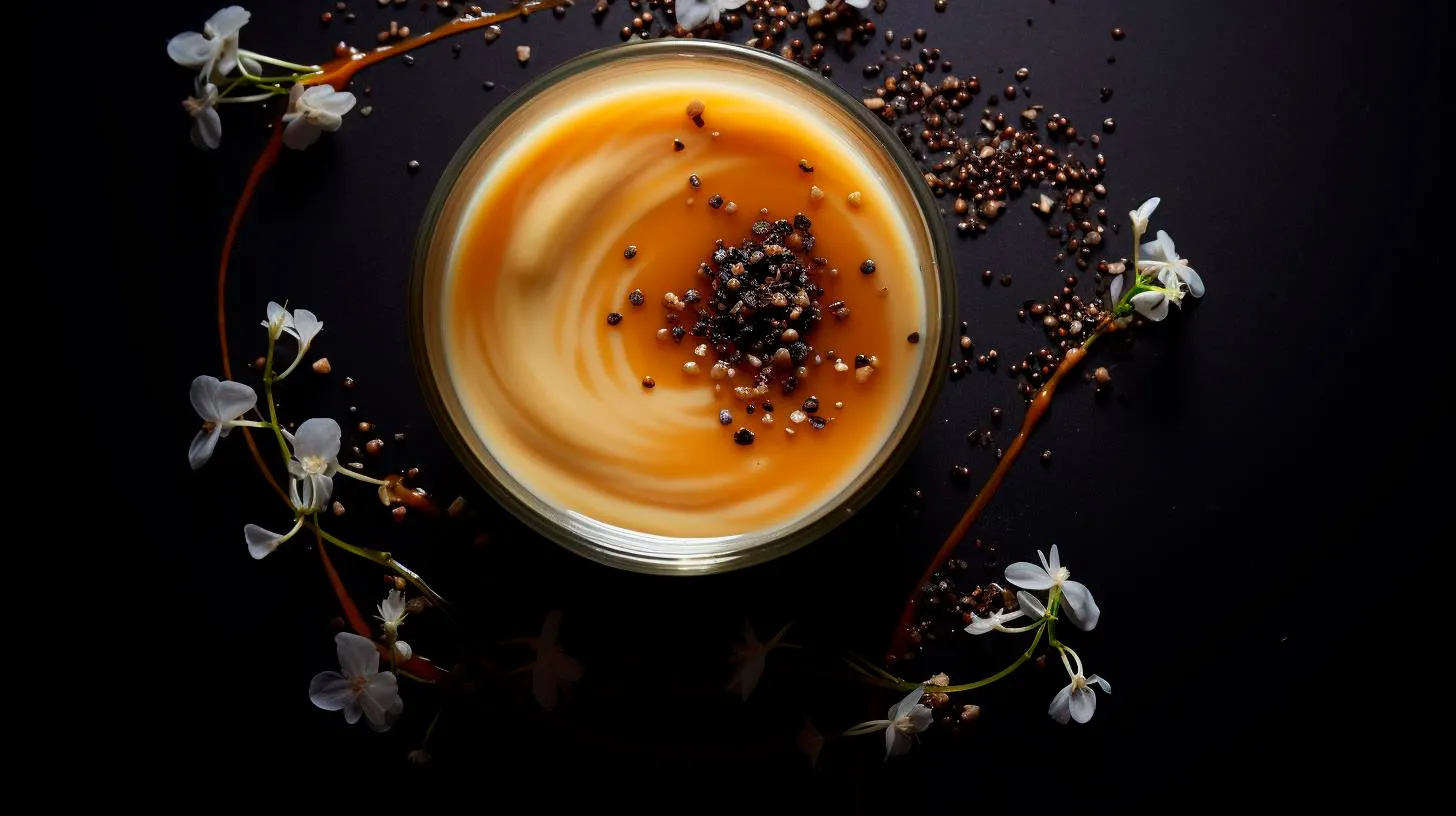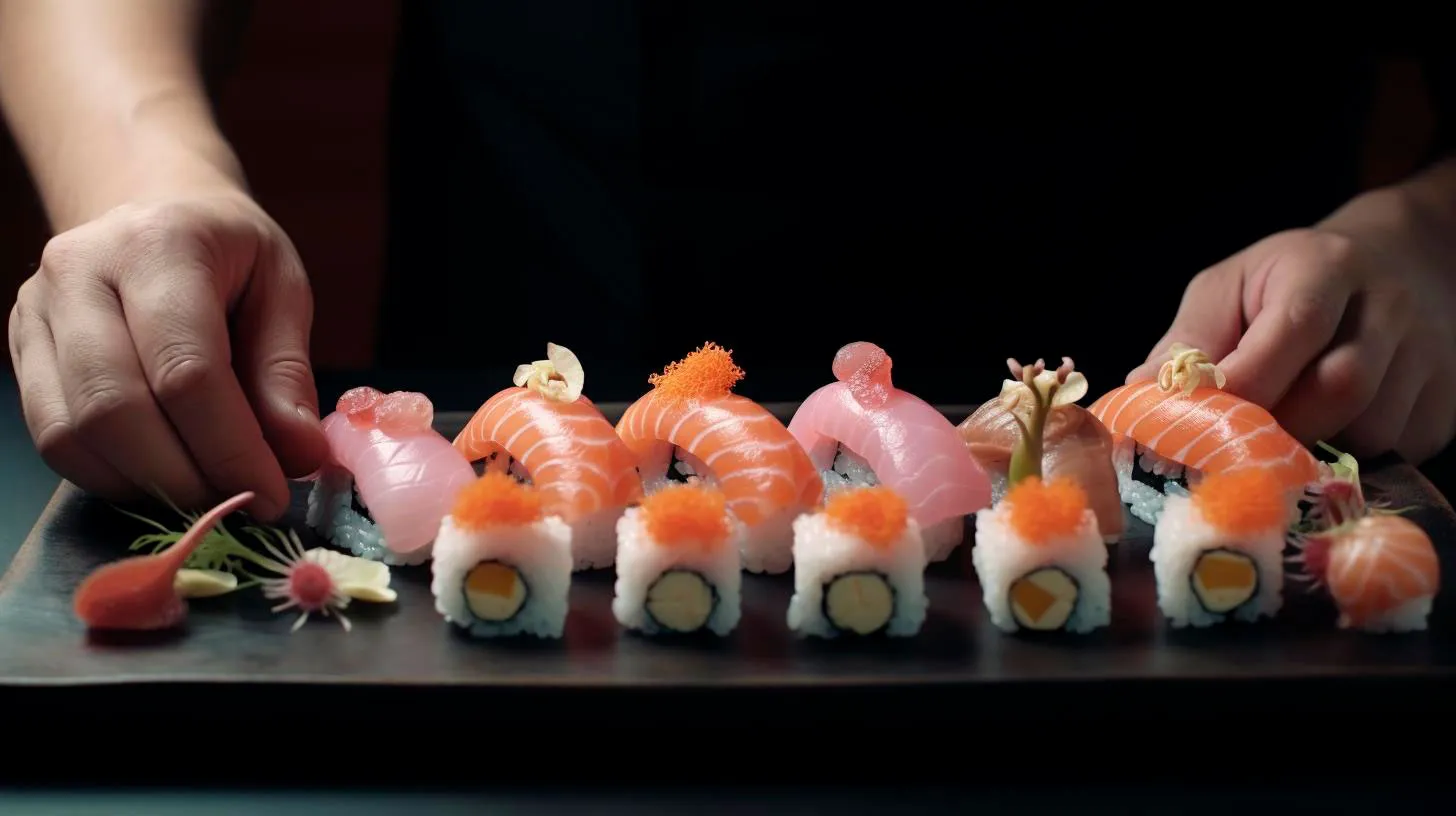Traditional vs Modern Sushi Knives: Weighing the Pros and Cons
While traditional sushi knives have been the go-to option for centuries, modern alternatives have started gaining popularity. In this article, we will examine the pros and cons of both traditional and modern sushi knives, helping you make an informed decision based on your preferences and needs.
Traditional Sushi Knives
Traditional sushi knives, such as the Yanagiba and Deba, have been used in Japan for centuries and are highly regarded for their precision and craftsmanship. These knives are typically handmade by skilled artisans and possess unique characteristics that set them apart:
- Precision: Traditional sushi knives are specifically designed to make precise cuts, ensuring the sushi maintains its texture and flavor.
- Single Bevel: These knives have a single bevel blade, which means they are sharpened on one side only. This design allows for fine control and clean cuts.
- Hard Steel: Traditional sushi knives are usually crafted from high-quality carbon steel, known for its exceptional sharpness and edge retention.
- Authenticity: Using traditional knives adds a touch of authenticity to the sushi-making process, enhancing the overall experience for the chef and diner alike.
However, despite their many advantages, traditional sushi knives also have some drawbacks:
- Maintenance: Traditional knives require regular maintenance, including honing and sharpening, to retain their exceptional performance. This can be time-consuming and challenging for beginners.
- Price: Due to their craftsmanship and high-quality materials, traditional sushi knives tend to be more expensive compared to their modern counterparts.
- Less Versatile: Traditional sushi knives are designed specifically for slicing fish and may not be as versatile for other kitchen tasks.
Modern Sushi Knives
As the culinary world continues to evolve, modern sushi knives have emerged as an alternative to traditional options. These knives are often made with advanced materials and technologies, offering unique features:
- Versatility: Modern sushi knives are designed to be versatile and suitable for various kitchen tasks beyond sushi preparation.
- Durability: Many modern knives are crafted from stainless steel, making them resistant to rust and corrosion. This improves their longevity and ease of maintenance.
- Ergonomics: Manufacturers of modern sushi knives pay great attention to ergonomics, ensuring comfortable handling and reduced fatigue during use.
- Affordability: Compared to traditional knives, modern sushi knives are often more budget-friendly, making them accessible to a wider range of sushi enthusiasts.
Nonetheless, before jumping on the modern sushi knife bandwagon, it’s essential to consider a few caveats:
- Sharpness: While modern knives can be incredibly sharp, some may not match the fine edge of traditional sushi knives. This can affect the precision of cuts.
- Limited Authenticity: Using a modern sushi knife may lack the cultural authenticity and traditional feel that many sushi aficionados seek.
- Overwhelming Choices: With the multitude of modern sushi knives available on the market, it can be a challenge to find the right one that meets your specific needs and preferences.
Key Takeaways
Choosing between traditional and modern sushi knives ultimately boils down to personal preference and the importance you place on authenticity, precision, versatility, and price. Here are some key takeaways to help you decide:
- If authenticity and precision are top priorities: Traditional sushi knives provide unparalleled craftsmanship and performance, perfect for those seeking a traditional sushi experience.
- If versatility and affordability are crucial: Modern sushi knives offer a wider range of functionalities and are often more budget-friendly, making them suitable for home cooks and beginners.
- Consider a hybrid approach: Some chefs and sushi enthusiasts opt for a combination of both traditional and modern knives, leveraging the unique strengths of each type for different purposes.
In conclusion, whether you choose to embrace the time-honored tradition of traditional sushi knives or explore the conveniences of modern alternatives, both options have their pros and cons. Understanding your needs and preferences, along with the characteristics and advantages of each type of knife, will help you make an informed decision and enhance your sushi-making journey.
Pros and Cons of Traditional vs Modern Sushi Knives
In this article, we will explore the pros and cons of both traditional and modern sushi knives, helping you make an informed decision based on your preferences and needs.
Traditional Sushi Knives
Traditional sushi knives, or Yanagiba, are characterized by their single-beveled, long and slender blade. These knives are handcrafted by skilled artisans using traditional Japanese techniques that have been passed down for generations. Here are some key advantages and disadvantages of traditional sushi knives:
Advantages:
- Authenticity: Traditional sushi knives are treasured by sushi chefs for their craftsmanship and legacy. Using a traditional knife adds an air of authenticity to your sushi-making process.
- Precision: The single-beveled edge of a traditional sushi knife allows for ultimate precision, making it easier to achieve clean and thin slices of fish.
- Sharpness: Traditional sushi knives are known for their exceptional sharpness. They can effortlessly glide through the fish, ensuring clean cuts that enhance the presentation and flavor of each piece.
- Control: The design of traditional sushi knives offers excellent control, allowing you to manipulate the knife with ease. This control is especially important when making intricate cuts for nigiri or sashimi.
Disadvantages:
- Skill requirements: Traditional sushi knives require practice and skill to handle properly. The single-beveled edge demands a different technique compared to the double-beveled blades used in Western knives.
- Price: Handcrafted by skilled artisans, traditional sushi knives tend to be more expensive than their modern counterparts. They are considered an investment for serious sushi enthusiasts and professional chefs.
- Maintenance: Traditional sushi knives need diligent care and maintenance. They should be sharpened regularly on a whetstone and require occasional reconditioning by a professional.
Modern Sushi Knives
Modern sushi knives, also known as Western-style sushi knives, are designed with inspiration from traditional Japanese knives but incorporate aspects of Western knife-making techniques. Let’s explore the advantages and disadvantages:
Advantages:
- Versatility: Modern sushi knives often feature a double-beveled edge, making them suitable for a variety of cutting tasks beyond sushi making. They can be used for fruits, vegetables, and other general kitchen cutting needs.
- Ease of use: The design of modern sushi knives is more forgiving, making them easier for beginners to handle. They require less practice to achieve clean cuts and can be a great choice for home cooks.
- Affordability: Compared to traditional sushi knives, modern options are often more affordable due to mass production and the use of standard manufacturing techniques.
- Low maintenance: Modern sushi knives are typically made from stainless steel or other durable materials that require minimal maintenance. They are often dishwasher safe and do not require frequent sharpening.
Disadvantages:
- Authenticity compromise: Some sushi purists argue that modern sushi knives lose the traditional essence. If you prioritize the cultural and historical aspects of sushi making, a modern knife may fall short.
- Limited specialization: While modern sushi knives are versatile, they may not excel in specific sushi techniques such as making incredibly thin slices or intricate cuts.
- Edge retention: While modern knives offer convenience, their blades may not hold an edge as well as traditional knives. Frequent sharpening might be required for optimal performance.
- Lack of uniqueness: With mass production, modern sushi knives lack the individual character and uniqueness found in traditional knives.
Ultimately, the decision between traditional and modern sushi knives boils down to personal preference, skill level, and budget. If you value authenticity and are willing to invest time in learning the traditional techniques, a traditional sushi knife may be the way to go. On the other hand, if you seek versatility, ease of use, and affordability, a modern sushi knife might be a better fit. Whichever you choose, remember that practicing proper knife care and maintenance is essential to ensure your knife’s longevity and performance.
Now that you have a better understanding of the pros and cons of traditional and modern sushi knives, you can confidently make a choice that aligns with your sushi-making journey. Happy sushi preparation!
Modern Sushi Knives: A Comparative Analysis of Pros and Cons
However, in recent years, modern sushi knives have gained popularity due to their distinct features and benefits. This article aims to provide an in-depth comparative analysis of the pros and cons of modern sushi knives, shedding light on their advantages and key takeaways.
1. Laser-Sharp Precision
One of the standout features of modern sushi knives is their exceptional sharpness. These knives are commonly manufactured using advanced technologies, such as laser cutting and high carbon stainless steel. This precision ensures that the blade effortlessly cuts through delicate sushi ingredients without causing any damage. With a modern sushi knife, chefs can achieve clean, precise cuts consistently, resulting in visually appealing sushi presentations.
2. Versatility at its Finest
Modern sushi knives excel in versatility, capable of handling various tasks beyond sushi preparation. These knives are designed to handle different ingredients, whether it be fish, vegetables, or fruits. With a modern sushi knife in hand, chefs can efficiently create thin slices of sashimi, julienne vegetables, and make intricate cuts effortlessly. The versatility of these knives makes them indispensable in a professional kitchen.
3. Ergonomic Design for Enhanced Comfort
Unlike their traditional counterparts, modern sushi knives often feature ergonomic designs that prioritize comfort during extended use. These knives are meticulously crafted with handles that offer a secure grip, reducing the strain on the chef’s hand and wrist. By incorporating ergonomics into the design, modern sushi knives enable chefs to work for longer periods without experiencing fatigue. This ensures a seamless and enjoyable sushi-making experience.
4. Durable and Long-Lasting
The durability of a knife is crucial, especially in a fast-paced kitchen environment. Modern sushi knives are built to withstand the demands of rigorous use. With their high-quality materials and construction techniques, these knives offer exceptional durability and longevity. Investing in a modern sushi knife means having a reliable tool that can withstand daily use without dulling or breaking. This longevity can ultimately save costs in the long run, making them a cost-effective choice for professional chefs.
5. Ease of Maintenance
Keeping knives sharp and well-maintained is vital to their performance. Modern sushi knives often come with features that make maintenance hassle-free. Some knives incorporate corrosion-resistant materials, preventing rust and simplifying cleaning. Additionally, some modern sushi knives come with a protective sheath or storage box, ensuring safe storage and easy access while maintaining blade sharpness. These features contribute to the overall convenience and usability of modern sushi knives.
Key Takeaways
- Modern sushi knives offer laser-sharp precision, enabling chefs to achieve clean and precise cuts effortlessly.
- The versatility of modern sushi knives allows chefs to handle various ingredients and perform different cooking techniques.
- Ergonomic designs in modern sushi knives prioritize comfort, reducing strain, and fatigue during extended use.
- High-quality materials and construction techniques make modern sushi knives durable and long-lasting.
- Easy maintenance features, such as corrosion-resistant materials and protective storage, enhance the usability and convenience of modern sushi knives.
In conclusion, modern sushi knives have undoubtedly revolutionized the art of sushi making. Their precision, versatility, ergonomic design, durability, and ease of maintenance make them an excellent choice for both professional chefs and sushi enthusiasts. By investing in a modern sushi knife, you can elevate your culinary skills, create visually stunning dishes, and enjoy the convenience they offer. Experience the best of both worlds by embracing the traditional art of sushi making with the aid of modern sushi knives.
Traditional Sushi Knives: Exploring Pros and Cons
In this article, we will explore the pros and cons of traditional sushi knives, shedding light on their unique features and benefits.
1. Consistency and Precision
One of the key advantages of traditional sushi knives is their exceptional consistency and precision. These knives are meticulously designed to ensure a consistent thickness of each slice, allowing for a visually appealing presentation. This precision is crucial to maintain the balance of flavors and textures in each piece of sushi.
- Extremely sharp blades for effortless cutting
- Consistent slice thickness for uniform presentation
- Precise cuts to maintain the integrity of ingredients
2. Versatility and Functionality
Traditional sushi knives are incredibly versatile and serve a variety of functions beyond sushi preparation. These knives often feature multiple blade types, including Yanagiba, Deba, and Usuba, each serving a different purpose. This versatility allows chefs to handle various ingredients, making them indispensable in a professional sushi kitchen.
- Yanagiba: Perfect for slicing sashimi
- Deba: Ideal for filleting fish and cutting through small bones
- Usuba: Excellent for precise vegetable slicing and chopping
3. Authenticity and Tradition
Using traditional sushi knives adds an air of authenticity and tradition to the sushi-making process. These knives have a rich history that dates back centuries and are deeply rooted in Japanese culture. By incorporating traditional knives, chefs pay homage to the art form and create a truly immersive and authentic sushi experience for diners.
- Connect with the centuries-old tradition of sushi-making
- Enhance the overall dining experience
- Create a sense of authenticity and cultural appreciation
4. Maintenance and Care
While traditional sushi knives offer numerous benefits, it is essential to understand and address their maintenance requirements. These knives often require special care to retain their sharpness and longevity. Regular sharpening, honing, and hand-washing are necessary to preserve the blade’s integrity and prevent rusting.
- Sharpening and honing to maintain blade sharpness
- Hand-washing to prevent damage and rust
- Proper storage to avoid accidents and maintain blade quality
Conclusion
Traditional sushi knives serve as indispensable tools for sushi chefs worldwide, offering consistency, precision, and versatility. Incorporating these knives into the sushi-making process enhances authenticity and connects diners with the rich tradition of sushi preparation. However, maintaining these specialized knives requires regular care and attention. By understanding the pros and cons of traditional sushi knives, both chefs and enthusiasts can fully appreciate their importance in creating the perfect sushi experience.
Do you use traditional sushi knives in your culinary endeavors? Share your thoughts and experiences in the comments below!


